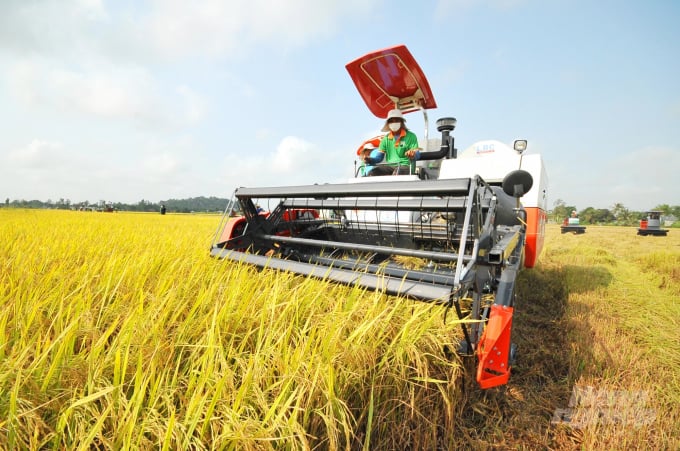November 26, 2025 | 09:36 GMT +7
November 26, 2025 | 09:36 GMT +7
Hotline: 0913.378.918
November 26, 2025 | 09:36 GMT +7
Hotline: 0913.378.918

The VnSAT project has helped change the rice production in Dong Thap and many provinces in the Mekong Delta. Photo: Van Vu.
In the 2016-2021 period, the VnSAT Project has implemented a demonstration model that applies "3 decreases 3 increases" and "1 must 5 decreases" in Dong Thap province's 6 northern districts. Thereby, the model is evaluated as effective and is currently being replicated by farmers.
To implement the VnSAT project, the local agricultural sector has organized 566 training courses with more than 20,000 farmers participating; built 75 farming models of "3 decreases 3 increases" and "1 must 5 decreases" with 140 hectares and 100 farmers participating.
The application area of "3 decreases, 3 increases" and "1 must 5 decreases" for the whole VnSAT project is 24,232 hectares (accounting for nearly 5% of the province's rice cultivation area). The model "Ideal rice production" is piloted by My Dong 2 Cooperative, Thap Muoi district, and Rynan Smart Fertilizers Company on 7.6 hectares.
Accordingly, applying high technology in production helps people reduce the amount of seed. The average yield is 7-8 tonnes of fresh rice per hectare. The production cost is reduced by 45 - 50% compared to the old farming method, ensuring high profits for farmers.
Translated by Ha Phuc
/2025/11/24/3536-2-112800_176.jpg)
(VAN) Dong Nai now has tens of thousands of hectares of forests certified for sustainable management, and this area will continue to be expanded in the coming period.

(VAN) Vinh Ha hamlet (Dai Xuyen commune, Hanoi) is shifting away from small-scale farming as households adopt bioscurity into their breeder chicken models.

(VAN) Heavy rains make aquatic species more vulnerable to disease. Proactive water management and high-tech systems help farmers prevent outbreaks and protect yields.

(VAN) Greenhouses are shifting production mindsets in Binh Lu commune, enabling farmers to ‘weather the sun and rain’ and secure stable vegetable harvests throughout the year.

(VAN) Green transition is crucial for the Mekong Delta amid climate change and stricter standards, offering a path toward sustainability.

(VAN) Dong Thap promotes agricultural restructuring, forms large specialized farming zones, raises the value of agricultural products and develops toward ecological and high-tech directions.
/2025/11/22/4018-4-213342_747.jpg)
(VAN) The Mekong Delta Agricultural Experts Club has attracted 143 experts and researchers to participate in providing consultancy and contributing initiatives to the development of one million hectares of high-quality rice.